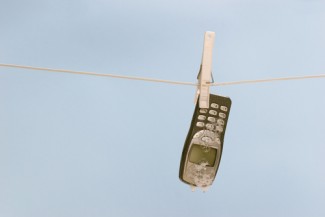Lawyer Is Among Cellphone Users Flummoxed on How to Disinfect the Devices

Image from Shutterstock.
Apple has a warning for germophobes who want to disinfect their devices.
Its customer manual cautions against use of “window cleaners, household cleaners, aerosol sprays, solvents, alcohol, ammonia or abrasives.” BlackBerry offers similar advice. The problem, the Wall Street Journal explains, is that cleaning products may damage the phone’s protective coating.
California intellectual property lawyer Emily Evitt tells the Wall Street Journal she hasn’t found a solution for her iPhone that cleans well without harming the screen. Her husband, who writes at the Manly Housekeeper, wipes the back cover of the couple’s phones with alcohol and wipes the front with slightly damp cloth.
Water doesn’t do the job, according to a test by HML Labs of Muncie, Ind. The laboratory tested eight phones from a Chicago office and found all contained high levels of coliform bacteria indicating fecal contamination. Water reduced the bacteria by only 4 percent. Another 2011 study of cellphones carried by college students found they were “veritable reservoirs of pathogens.”
Some recommend microfiber cleaning cloths for cellphones, though their touted 99 percent success rate doesn’t satisfy one microbiology professor interviewed for the article. Enough organisms can survive, he said, to make you sick. A tech support agent for Best Buy suggested another solution—a UV disinfectant wand. And a new product coming out in January promises to use UV-C light to clean phones as they charge.



